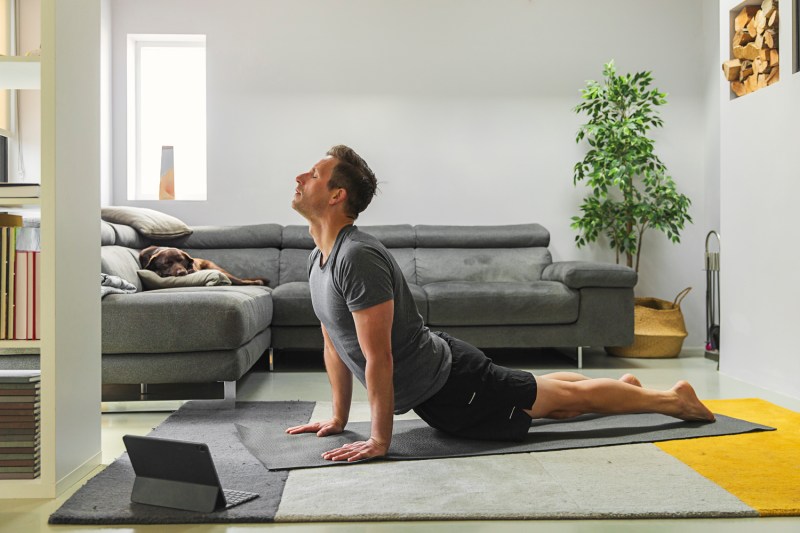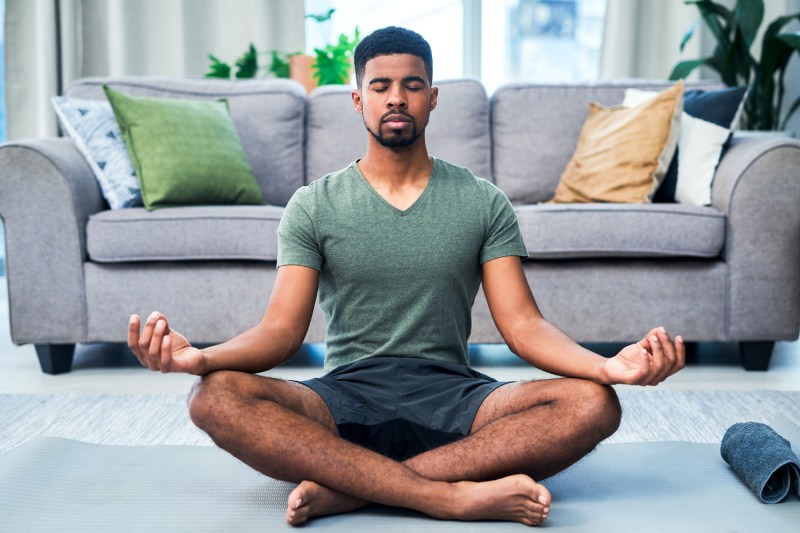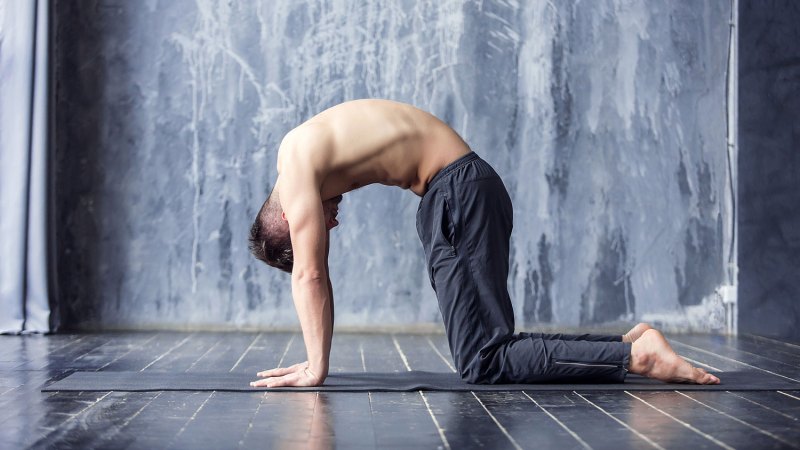
Society places heavy emphasis on physical fitness, but other forms of exercise exist. Sports, resistance training, Zumba, power walking — the list goes on. Unfortunately, some people lack either the time or the physical ability to choose some or most of those options. That’s where yoga comes in.
While yoga may seem easier than lifting 50-pound weights or running for miles, it’s still beneficial to your health in many ways. With so many possible yoga poses out there for all levels, almost anyone looking to start the practice can find moves suitable to them, regardless of their current health.
Because yoga also involves clearing your mind and focusing on one thing, it has the additional benefit of improving your mind along with your body. And best of all, yoga either can be used by itself or integrated with your current workout routine if you have one. Here’s your one-stop guide for what yoga is and how you can implement it into your workout.

What is yoga?
Yoga is a type exercise originating from South Asian cultures. There are multiple types of yoga, such as ashtanga, Hatha, and vinyasa, each with different focuses and purposes. It often involves engaging in mindfulness, moving your body to form poses, and managing your breathing. Yoga is very different from other types of exercise, like aerobics and resistance training — the main focus of yoga is achieving harmony between the body and the mind. Although it can technically be considered exercise, it’s also a form of meditation.
Below are seven benefits of practicing yoga regularly, with many of these benefits having scientific explanations to support them.

8 benefits of a regular yoga practice
1. Improves flexibility and strength
Yoga doesn’t require the use of weights, but it can still help you build muscle mass to some extent. Several yoga poses require you to stretch and tone the muscles, which helps to improve muscular endurance, posture, and bone health. Then you must use core, upper body, and lower body strength to hold these poses for prolonged periods. Maintaining certain yoga poses can sometimes give the same feeling as planking for a whole minute, but that’s because your muscle endurance is pushed to its limits to improve.
Read here for a more in-depth explanation of why flexibility and strength are essential for physical exercise.
2. Maintains healthy joints
Your muscles aren’t the only parts of your body that are used in yoga. Often in yoga, you flex, extend, and rotate your muscles to achieve the desired poses. The mobilization of the joints improves the flow of synovial fluid, which lubricates them and allows for smooth movement of the bones.
The frequent use of your joints in yoga can prevent stiffness that occurs from age or simply being hunched over at your computer. In addition, controlling the available range of motion in joints is crucial to good posture and decreasing the risk of injury when doing more strenuous forms of exercise.
3. Relieves chronic pain
For those who deal with frequent neck and lower back pain, yoga is a healthy way to find some relief. Chronic pain is often caused by inflammation, but the relaxing qualities of yoga can help decrease inflammation in certain parts of your body.
4. Strengthens the immune system
Several illnesses can also be caused by inflammation. Certain poses can help increase the body’s lymphatic circulation and support the immune system. To improve immunity to respiratory illnesses, deep breathing (an important aspect of yoga) can strengthen muscles in the respiratory system.
Habitual inactivity can also increase the risk of other chronic health issues, such as obesity and deep vein thrombosis. Yoga is an excellent way to decrease these risks.
5. Helps you sleep better
A prevalent health issue is not getting enough sleep each night. Not being able to sleep well at night can lead to various physical and mental health consequences. From a physiological standpoint, yoga can increase melatonin production in the body; this hormone helps regulate a person’s sleep cycle and circadian rhythm. The more melatonin your body produces, the easier it will be to get a good night’s sleep.
6. Reduces stress, anxiety, and depression
Along with improving the quality of sleep, which itself can improve mental health, yoga can also directly benefit the nervous system. Yoga is considered a form of meditation; being mindful of your breathing can help stimulate the parasympathetic nervous system, which can in turn relieve stress and physical symptoms of anxiety, such as hyperventilation and rapid heart rate. Studies also show that regular yoga practice can also lead to a 50% decrease in symptoms of clinical depression by helping to release serotonin in the body.
7. Improves cardiovascular functioning
Doing yoga — even yoga for beginners — can help improve cardiovascular functioning. One way is because yoga poses that involve twisting and bending can help move blood throughout the body. This may reduce the risk of blood clots and improve the health of the heart and blood vessels.
Some studies show that one of the benefits of yoga is that it may also lower cholesterol levels. Yoga can help raise levels of HDL (good) cholesterol and lower levels of LDL (bad) cholesterol. Additionally, some yoga poses, such as plank pose and boat pose, can help strengthen the heart muscle, which improves the heart’s ability to pump blood and reduce the risk of heart failure.
8. Lifts your overall mood
Even if you don’t have any notable mental health issues, the increased serotonin mentioned above can still improve your mood. Relaxing your mind through yoga can help you feel more content and happy, which can help you achieve a more positive state of mind. This itself can raise your self-esteem. It can also make you more sensitive to your feelings and those of others, leading to better relationships with your loved ones.

How to add yoga to your routine
If you’re intrigued, you might consider signing up for yoga classes with instructors who are more than willing to guide and help you. Classes can also expand your social network and help you find a community of like-minded individuals.
Although some people prefer having an instructor to guide them, you can also practice yoga by yourself at home. Start by searching for various yoga poses through books, videos, or web articles. Try a few of these per session and see which ones work for you and which ones don’t.
If a pose is uncomfortable or you can’t hold it for very long, consider looking into alternative poses that affect the same group of muscles; the purpose of yoga is not to exceed your personal limits but to explore them instead. From there, you can slowly build a routine that is both beneficial to your health and synergistic with your already existing workout routine.
It is also essential to find the best yoga equipment possible; higher-quality products can make practicing yoga even easier with less hassle.
Editors' Recommendations
- Working out on keto: Maximize your fitness plan with this handy guide
- How to run faster and longer to make the most of your workout
- Include these 10 foods high in b1 in your diet to reap the benefits of thiamine
- Do you need intra workout carbs?
- Sound therapy to improve your workouts: does it really work?



